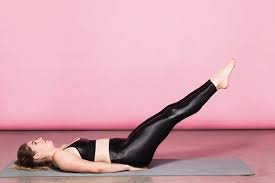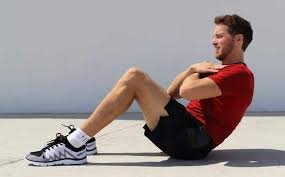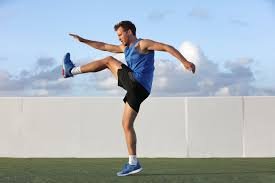Are All Yoga Postures Beneficial?
Spiritual healing cannot be sustained without also addressing the health of our bodies, which often hold a lot of past trauma, usually percieved in the form of tension and stiffness. Some people begin the practice of yoga to remove these blockages for spiritual reasons, some for greater peace of mind, and some people come to yoga for more of the various physical benefits it offers.
The Sanskrit term “Yoga” actually means “to join” or “to unite”. Thus, the many branches of yoga developed in the East are all considered different inspired teachings to help us in our Individual Consciousness “unite” with the Universal Consciousness. Some branches deal with mastering breath control, some with mastering different forms of meditation, some with unraveling the path of wisdom, some with inspiring selfless service to humanity, etc. “Hatha” Yoga, which is the practice of using physical techniques to release bodily blocks to our vital energy, is what we generally have understood “Yoga” to be in the West. As a yoga practitioner, chiropractic doctor, and intuitive healer, I have some insights I would like to share regarding how to effectively use the various physical stretches and postures taught in yoga more safely — for achieving better physical and spiritual develoopment. The follow article deals with certain recommendations I have for new and advanced students of hatha yoga alike, which may help them avoid sublte or gross damage to their bodies over time. I wish all yoga practitioners to receive only benefits — and none of the adverse consequences — for all their great intentions and efforts.
When we have stiffness or pain in the body, we cannot always tell if we have a problem involving only a stiff or strained ‘muscle’. Often the underlying cause may actually be a ‘joint’ problem, involving poorly working or degenerating vertebrae, and resulting in irritation to the nerves passing through an inflamed spine. These irritated nerves cause muscles to tighten — so muscle stiffness is felt whether we have a muscle problem or a joint problem. Only a trained chiropractor can differentiate a muscle problem from an actual joint and nerve problem.
When attempting to self-treat spinal problems primarily by doing yoga or by doing stretching exercises, if you are unsuccessful, or if your problem worsens, further yoga or exercise may prove to actually be dangerous. Yoga and stretching are wonderful for healthy backs, and are designed to maintain and restore movement and function to the spine as a whole. However, research has shown that if there are individual inflamed, locked-up, or degenerating joints of the spine, these tend to persist despite trying to stretch them, and they may even be worsened by attempted stretching or strengthening exercises.
Once a skilled chiropractic doctor treats you and restores proper function to the problem areas of your spine, after inflammation subsides, stretches and other yoga exercises can then be very beneficial and supportive to healing. Chiropractic care, proper stretching & strengthening exercises, and massage are each vital parts of a "holistic" approach to successfully treating spinal and joint conditions.
In my profession as a chiropractic doctor, I have treated many yoga students as well as many yoga instructors, and I have often found that about 25-30% of the postures they are doing are potentially dangerous. If you have any questions about your individual yoga routine, it is good to consult a chiropractic doctor who can examine your spine and make specific recommendations to you for your ideal exercise routine.
SOME POTENTIALLY DANGEROUS STRETCHES & YOGA EXERCISES INCLUDE:
(1) Avoid Bending While Twisting - e.g. especially triangle poses and their modifications. Research has shown that bending 30 degrees forward or more, with even a very small (15 degree) twist, will begin to rupture disc fibers! If you watch how a 2 year old picks up a beach ball, and you’ll see nature’s wisdom in action. They always squat down, and lift with their legs, instead of their backs!
(2) Avoid Straight Leg-Llifts - e.g. boat pose, leg-lifts, and exercises using similar variations, are often advocated as "core" strengthening exercises for your abdominal muscles. They aren't, they actually use your "hip flexing" muscle (psoas muscle) which puts undue stress on your lower back. Many athletes come to my office as a result of low back pain from doing leg lifts and full sit-up types of exercise. The military has recently changed their age-old PT requirements, from mandating full sit-ups, to now only doing “crunches” instead!
(3) Avoid Full Sit-Ups - Again, while these are often advocated as "core" strengthening exercises, they also use predominantly your "hip flexing" (psoas) muscles, which attach to your lower spine. These exercises are one of the main reasons so many military personnel come to me for low back problems after basic training! A better alternative exercise are "crunches", which strengthen only your abdominal muscles.
(4) Avoid both Head Stands and Shoulder Stands - while there are many benefits to inversion, the dangers of head and shoulder stands greatly outweigh their benefits. The plough posture is o.k., but too much spinal stress occurs from these other weight bearing inverted yoga poses, and permanent ligament, disc damage, and cartilage damage could occur. Using a "Roman chair" or other form of inversion machine would be a much better alternative.
(5) Avoid Neck Rolls - Rotating the neck for flexibility can and will aggravate underlying joint problems, which are often subtly present in our necks. While our upper backs tend to hold most of our tension, and the vertebrae become locked and immovable, the middle of our necke usually become too loose, and the ligaments become lax. Neck rolls aggravate already over-stretched and lax ligaments. There are many other forms of safeer and more effective stretches for the neck, and most stretching should actually be focused to loosen the upper back.
(6) Avoid “Ballistic” Movements - stretching should involve very conscious, gradual, and precise, and intentional movements, done over a 30-60 second period of time, without any bouncing, flinging, or fast (ballistic) movements. This will result in a more lasting length change for the muscles being stretched, and minimize the chances for injuries.
** ALL OF OUR BODIES ARE DIFFERENT, SO ALWAYS CONSULT YOUR
DOCTOR BEFORE BEGINNING ANY FORM OF STRETCHING OR STRENGTHENING EXERCISES **
Please click on the following link below for a chart of some examples of potentially dangerous yoga asanas that could cause damage to the spine. They are circled in red. This chart is not comprehensive, and depending on your age, body, health, and spinal condition, there may be more exercises your doctor would suggest avoiding for the long-term, or just temporarily.








